A Plan for your HVAC System
HVAC requires careful planning. Even for a smaller residential project, HVAC systems will push air from a central unit to each room in the building. This requires components like ductwork and vents to distribute the air. Many such components will come together in a commercial HVAC system, to get airflow into the right spaces with the least amount of effort. An efficient HVAC system achieves the necessary airflow and expends minimal energy.
In this article, we will focus on two components that help with airflow: louvers and dampers. Let’s discuss exterior protection and interior direction.
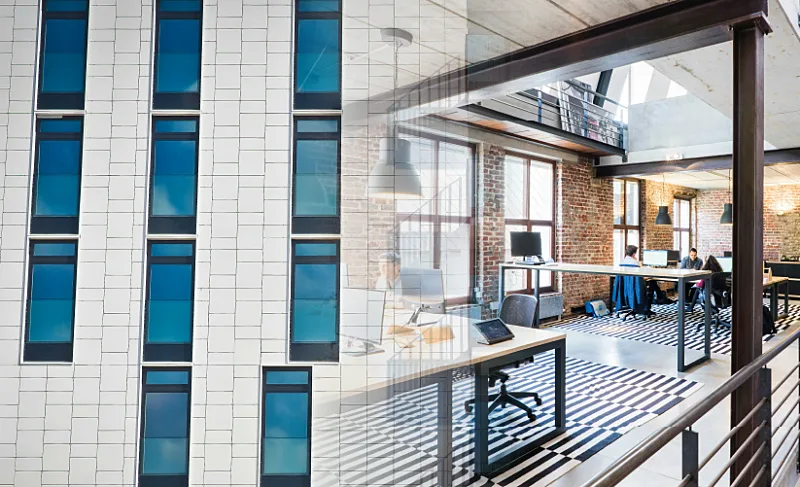
Exterior Protection with Louvers
Commercial HVAC systems will draw air in through openings along the building’s exterior envelope. Louvers protect these openings from rain and other harmful elements, while allowing airflow through the louver’s free area. The primary goal of a louver is preventing water infiltration during intake. Louver blades are set at an angle to deflect incoming rainfall as the system draws air through the louver. Each louver type will provide a certain level of protection. A drainable louver will have features to expel the water it captures, to keep the interior dry.
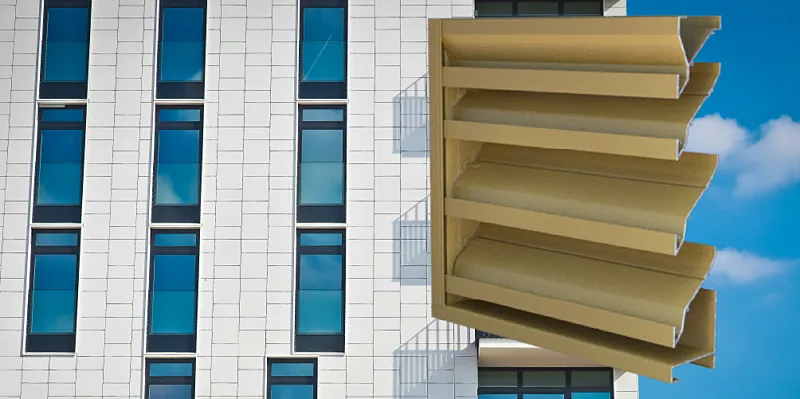
Severe weather louvers will have more features, like blade catches, to prevent water penetration when wind blows rain into the louver’s face. Louvers with more protective features may require more power to draw air into the system. This will depend on the specific design of the louver. More protection will reduce performance.
Louver Performance and Requirements
Your project will require louvers at specific points along the building's envelope and for specific purposes. For instance, you may be required to install a wind driven rain louver at key points in your building to protect these points during a rainstorm. In these situations, the goal will be to meet protection requirements first. A high-performance louver will not work if the project requires wind driven rain protection at the opening. Look for louvers that have been tested for wind driven rain and look at the louver’s test data. Airflow will be a secondary consideration in this case.
You may find multiple louvers that meet the requirements of the opening. If you have options, then you can start narrowing down your search based on performance. The two main indicators of superior performance are the louver’s free area, and its pressure drop.
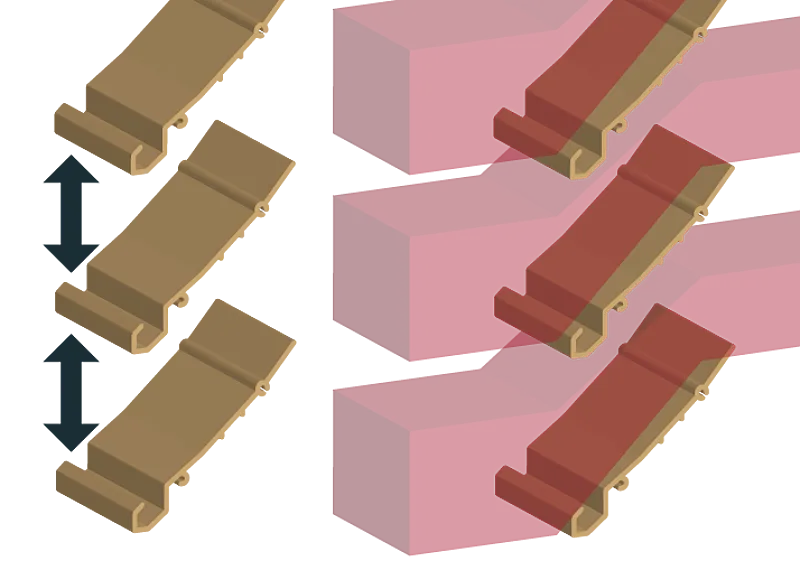
- More free area means more space for air to move through the louver. More space means less power needed for air intake.
- A lower pressure drop means that there is less air pressure lost as airflow passes through the louver. Less power is required to draw air through the louver’s free area.
- More free area often translates to lower pressure drop, but not always. Be sure to check both indicators for a better understanding of the louver’s air performance.
Compare louvers to see which one has the best air performance. Requirements may change from opening to opening, as you design the exterior spaces of the building. Always make sure the louvers meet the protection requirements.
Directing Airflow with Dampers
Commercial HVAC systems are elaborate. There are many rooms involved in the buildings and larger spaces that need more airflow. All these rooms will be connected by ducts to one or more HVAC units. Whether the space will be a shop or an office, the system will need the means to get conditioned air from one area of the building to another.
Dampers help get airflow to the right place. They can provide direction for the system by opening and closing. This regulates airflow and directs it to where it’s needed. Dampers can also be used to balance air pressure in the duct, to ensure an even flow from room to room. There are several distinct types of dampers that perform specific roles in your HVAC system.
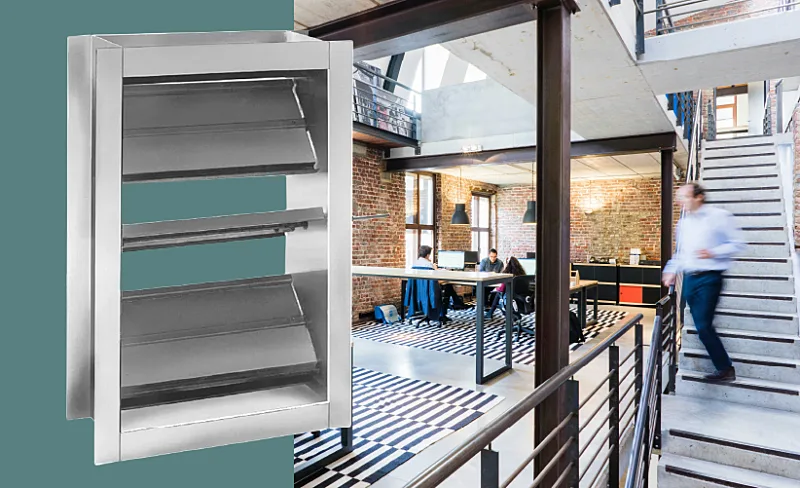
A complete commercial HVAC system will have multiple dampers of different types across the duct network, all working together to get air to the right spot.
- Volume control dampers regulate airflow. These dampers are set to open and close by default, to act as gateways between duct branches. They can also be set to modulate, so that control the amount of air passing through a given duct. Modulating can be helpful for adjusting air pressure.
- Inlet vanes also help modulate inlet airflow for fans and blowers. Their design “spins” air as it passes through the vane, reducing strain on the fan.
- Backdraft dampers and pressure relief dampers keep airflow moving in one direction. Both dampers are designed to open when air moves in the intended direction and close when air stops. Pressure relief dampers are designed to open and relieve pressure when the duct reaches a predetermined amount of air pressure.
- Isolation dampers are control dampers built for meeting low and no leakage requirements. Tunnel dampers are designed for heavy-duty airflow applications, specifically for tunnel systems. These dampers are rarely used in commercial HVAC projects, but there may be situations that call for their use.
Airflow conditions will change from room to room, depending on a wide range of variables. Does the room have a lot of windows? Do those windows get a lot of sunlight during the day? Is the room larger than other rooms? Answering these questions can help with designing the system. They can help you understand what dampers are needed at which points in your ductwork. As conditions change, the system will need the right dampers in place to meet those needs.
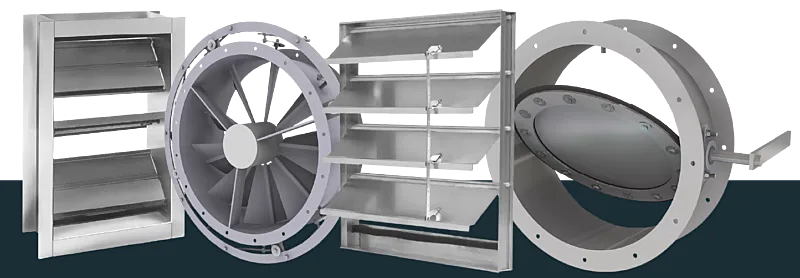
Commercial HVAC
With the right louvers and dampers in place, your commercial HVAC system will perform its best throughout the year. Read product submittals for performance data when selecting dampers and louvers for a project. Choose equipment that meets the requirements. When you can, look for products that provide efficient airflow.
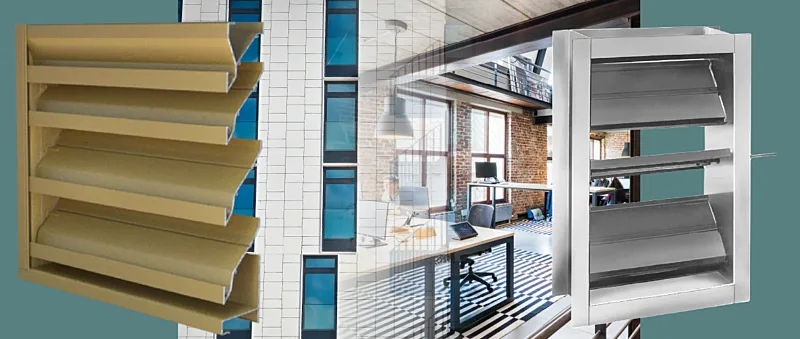
AWV and Commercial HVAC
At AWV, we build louvers and dampers for a wide range of projects, including commercial HVAC and industrial projects. We have worked with architects, engineers, and contractors to help them meet their HVAC requirements. Each of our products is built to meet the needs of the project. Browse our full line of louvers and dampers.
Starting a new project? Contact AWV today.







